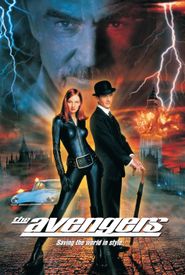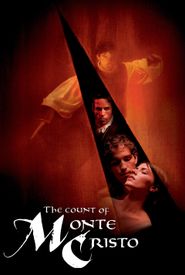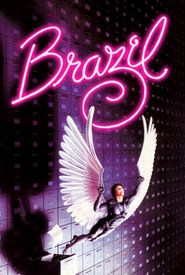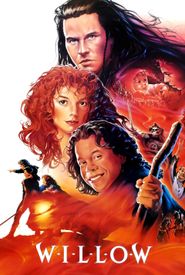William Hobbs, a remarkably versatile and multifaceted individual, left an indelible mark on the world with his extraordinary life, which was characterized by an unwavering passion for the performing arts, a natural flair for the art of swordsmanship, and a meticulous dedication to ensuring the accuracy of historical accounts and records.
Born to an esteemed Royal Air Force pilot whose life was tragically cut short during the tumultuous closing stages of World War II, Hobbs was subsequently raised and educated in Australia, a country that would come to play a significant role in shaping his formative years and fostering his innate passion for the performing arts and the noble sport of fencing.
As a young individual, Hobbs displayed a remarkable aptitude for the sword, his natural talent and skill in this area being so impressive that he narrowly missed out on the opportunity to represent his native Australia at the prestigious 1957 Melbourne Olympics, an experience that would have undoubtedly been a crowning achievement for any aspiring athlete.
In the year 1958, Hobbs made the significant decision to relocate to England, driven by his desire to further his education at the prestigious Central School of Speech and Drama, situated in the heart of London. This marked the beginning of a new chapter in his life, as he embarked on a three-year journey to explore his passion for acting by immersing himself in the world of repertory theatre.
However, despite his dedication and hard work, Hobbs struggled to make a lasting impression on the stage, and it soon became apparent that his acting ambitions were not destined for success. It was during this challenging period that he received sage advice from the renowned thespian Laurence Olivier, who urged him to reevaluate his career path and consider alternative pursuits.
As the years went by, Hobbs persevered and continued to thrive in the world of theatre, taking on the esteemed role of fight director for the renowned National Theatre Company, a position he held for a remarkable nine years. During this period, he found the time to pen his inaugural textbooks, "Stage Combat: The Action to the Word" and "Techniques of the Stage Fight", which were published in 1967.
Hobbs' remarkable expertise as a fight director was distinguished by his unwavering commitment to historical accuracy and realism, a philosophy that underpinned his entire approach to crafting authentic and captivating combat sequences.
He firmly believed that the cornerstone of successful fight direction lay in the actors' capacity to perform with a heightened sense of awareness, characterized by an unwavering state of coolness, effortless body relaxation, and meticulous control.
This innovative approach enabled Hobbs to create fight scenes that were not only convincingly immersive but also remarkably safe for the actors involved, a testament to his dedication to ensuring the well-being and success of his cast.
Throughout his career, Hobbs' emphasis on historical accuracy and realism earned him a reputation as a master fight director, known for his ability to bring historical periods and cultural contexts to life through his work.
Notable among the many impressive works of the accomplished actor is the 1977 film The Duellists, directed by the renowned Ridley Scott, which boasts some of the most realistic and suspenseful fight scenes ever captured on celluloid.
Noted character actor, Hobbs, enjoyed a storied career marked by collaborations with a veritable who's who of esteemed thespians, including the inimitable Peter O'Toole, the versatile Tim Roth, the commanding Liam Neeson, and the eternally youthful Leonardo DiCaprio. His impressive body of work is replete with memorable turns in sweeping, action-packed epics, such as the 1995 historical drama, Rob Roy, and the 1998 cinematic adaptation of Alexandre Dumas' The Man in the Iron Mask.
The renowned author and expert in the field of stage and screen combat, Hobbs, published his seminal work "Fight Direction for Stage and Screen" in 1995, wherein he expounded upon the pivotal role that an actor's mental state plays in the execution of fight scenes.
In his comprehensive tome, Hobbs underscored the significance of the actors' mental state, positing that they must be able to operate on a plane of emotional equilibrium, characterized by complete physical relaxation and mastery over their bodily functions, in order to perform their actions with unwavering conviction and unimpeachable safety.
This notion is crucial, as it allows the actors to fully immerse themselves in the scene, thereby creating a more authentic and engaging experience for the audience. By cultivating a state of calm and control, the actors are able to access a deeper level of emotional truth, which in turn enables them to convey the required level of intensity and passion to the audience.
Furthermore, Hobbs' emphasis on the importance of the actors' mental state during fight scenes serves as a poignant reminder of the delicate balance between physicality and emotional expression. By acknowledging the interconnectedness of these two aspects, actors can develop a more nuanced understanding of their craft, ultimately leading to more compelling and memorable performances.
In conclusion, Hobbs' book "Fight Direction for Stage and Screen" offers a wealth of insights and practical advice for actors, directors, and fight choreographers, highlighting the crucial role that an actor's mental state plays in the execution of fight scenes.
William Hobbs was a revered and accomplished individual who left an indelible mark on the world of film and stage, his life's journey a testament to his unwavering dedication to the performing arts, his ardent enthusiasm for the art of swordsmanship, and his steadfast commitment to historical accuracy and realism.
With a career spanning multiple decades, Hobbs made a lasting impact as a fight director, stuntman, and actor, his work earning widespread acclaim and admiration from both audiences and filmmakers. His passion for his craft was evident in every aspect of his work, from the meticulous attention to detail he brought to his choreography and stunt design, to the depth and nuance he brought to his performances on screen and stage.
Throughout his life, Hobbs was driven by a love of the performing arts, and he spent many years honing his skills in various aspects of the industry. As a fight director, he brought a level of authenticity and realism to his work, drawing on his extensive knowledge of swordsmanship and martial arts to create complex and engaging fight sequences.
As a stuntman, Hobbs was known for his bravery and athleticism, performing many of his own stunts and taking risks that few others would dare to attempt. His experience and expertise in this area allowed him to bring a level of realism and excitement to his performances, and he quickly became known as one of the go-to stuntmen in the industry.
In addition to his work as a fight director and stuntman, Hobbs also had a successful acting career, appearing in a number of films and television shows throughout his life. He brought a level of depth and nuance to his performances, and was able to convey a sense of authenticity and vulnerability that resonated with audiences.
Throughout his life, Hobbs was committed to historical accuracy and realism, and he spent many years studying and researching the art of swordsmanship and martial arts. He was a perfectionist, and his attention to detail and commitment to authenticity were evident in every aspect of his work.
In the years following his passing, Hobbs' work continues to be celebrated and admired by audiences and filmmakers alike. His legacy as a fight director, stuntman, and actor serves as a testament to his dedication to his craft, and his passion for the performing arts.

























